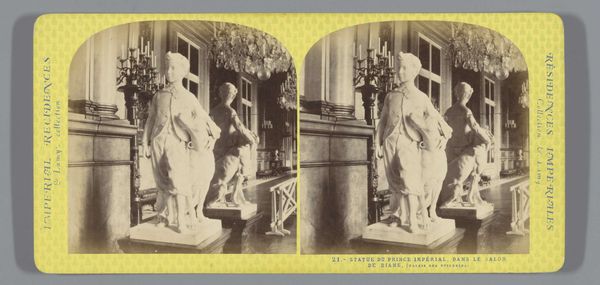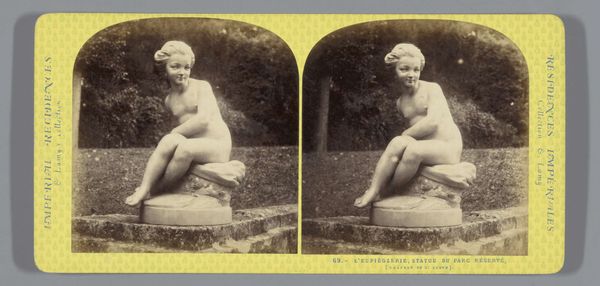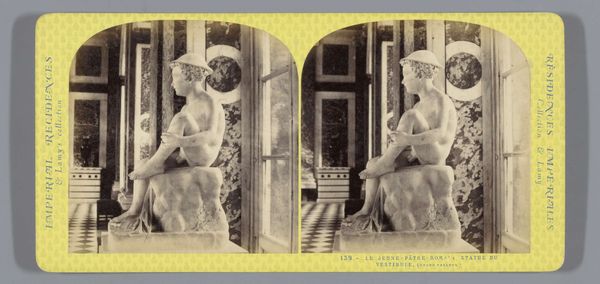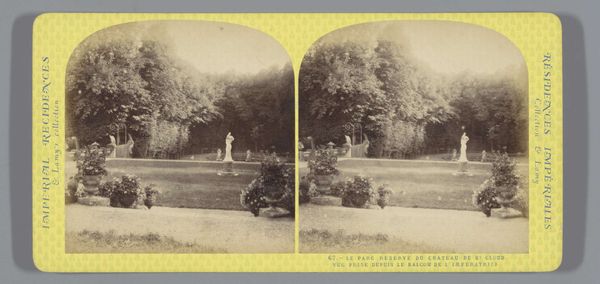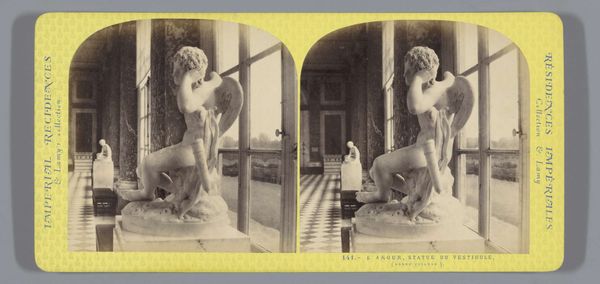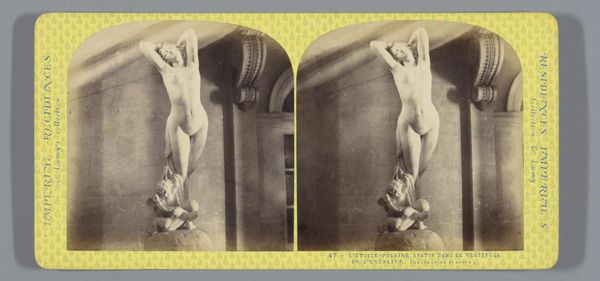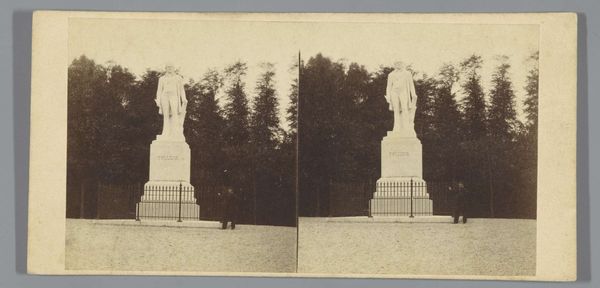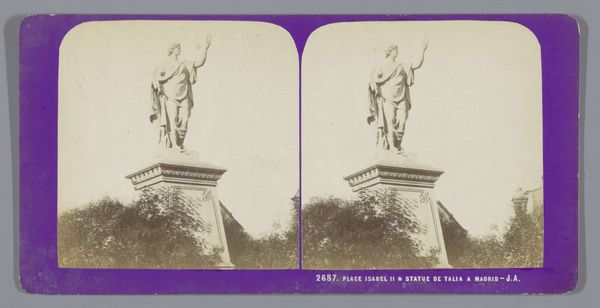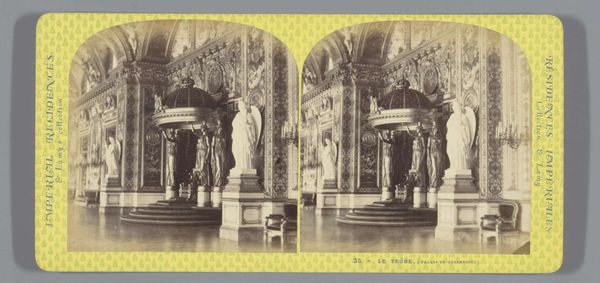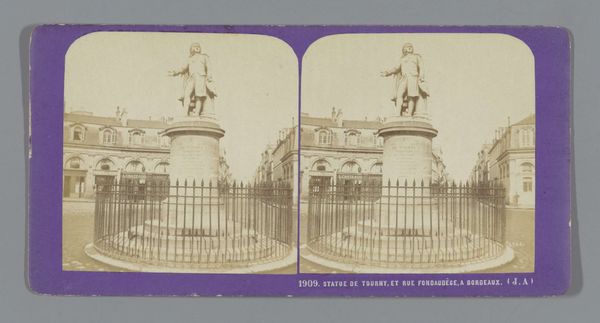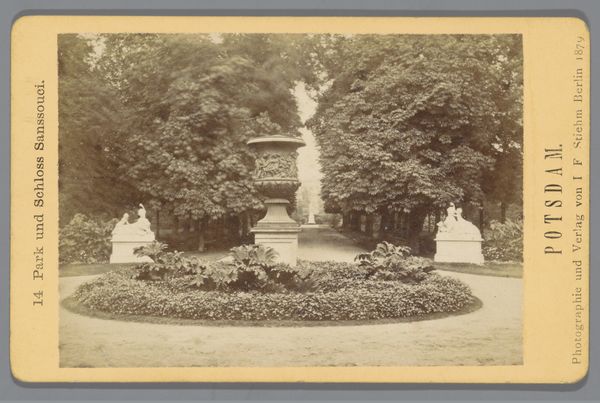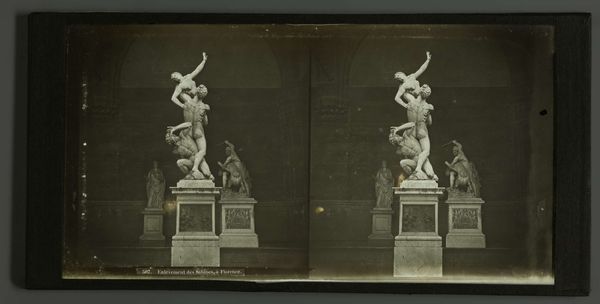
Sculptuur in het Parc de Saint-Cloud, voorstellende een naakte vrouw c. 1860 - 1870
0:00
0:00
Dimensions: height 85 mm, width 170 mm
Copyright: Rijks Museum: Open Domain
Editor: This stereo card presents a photographic view of a sculpture, circa 1860-1870, likely by Ernest Eléonor Pierre Lamy. The artwork captures a female nude in what appears to be a park setting. I am struck by the seemingly classical pose against the backdrop of an informal garden. What do you see in this piece? Curator: What grabs my attention is the intersection of idealized beauty, represented by the sculpture, and its placement within a real-world landscape. These sculptures of idealized forms were frequently placed within gardens intended for leisure, spaces that were socially coded and specifically for members of the elite. What we should ask is: How do we contend with an image like this, presented through a stereoscope that allowed it to be viewed in the domestic sphere? These seemingly simple details invite questions about access, class, and the visual consumption of art, especially concerning the female body. Editor: That makes me consider who would have owned these stereo cards, and what their viewing habits were like. So, you’re suggesting that the photo isn’t just about the statue, but it tells us something about the social context of the time? Curator: Precisely. The circulation of such images contributed to the construction of a particular gaze. These works reflect and reinforce existing power dynamics of the period. How do you think feminist theory helps us analyze this piece? Editor: Well, feminist theory makes me question the portrayal of the nude female form. Who is this statue *for*? Is she meant to represent some sort of ideal, or is she merely an object of display and desire for a presumably male viewer? It’s fascinating how much the photograph can reveal once you start digging into these layers of context. Curator: Absolutely. By viewing art through these critical lenses we can begin to understand the social impact, historical underpinnings, and entrenched biases within art, encouraging much-needed dialogue about these topics.
Comments
No comments
Be the first to comment and join the conversation on the ultimate creative platform.

